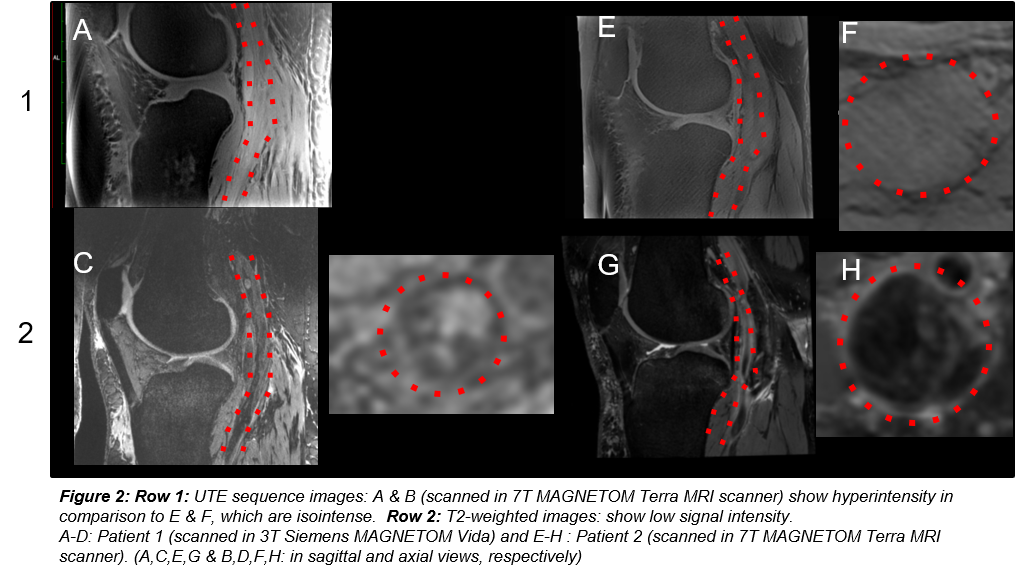MRI Characterization Of Thrombus For Differentiating Acute And Chronic DVT
Kavya Sinha, MD1, Christof Karmonik, PhD2, Alan Lumsden, MD1, Trisha Roy, MD, PhD1.
1Houston Methodist, Houston, TX, USA, 2Houston Methodist Academic Institute, Houston, TX, USA.
OBJECTIVES: Optimal patient selection for the endovascular treatment of iliofemoral DVTs remains a significant clinical challenge. However, many clinicians and societies still recommend endovascular treatment for some patients with extensive iliofemoral DVTs that present within 14 days2. Symptom onset is used as a gross surrogate for determining the composition of the clot to determine if a lesion is amenable to endovascular treatment. As the thrombus ages, collagen deposition increases and the bulk of fibrin within the thrombus becomes crosslinked and resistant to lysis3. Symptom onset has poor correlation with collagen content4 and is therefore not a reliable predictor of endovascular success. We have previously demonstrated that MRI using T2-weighted (T2W) and ultrashort echo time (UTE) sequences can accurately characterize collagen and thrombus with histologic validation5. The goal of this study is to relate MRI characteristics to clot composition to guide patient selection for endovascular treatment of iliofemoral DVT in the future.
METHODS: 2 patients with popliteal deep venous thrombus that presented within a week of symptom onset underwent Inari thrombectomy. Patient 1 was imaged in the 7T MRI and patient 2 was imaged with 3T Both patients had T2-weighted (T2W) and UTE sequences. Gross characteristics of collected thrombus were measured.
RESULTS: Patient 1 had a thrombus with high collagen content indicated by low signal intensity on T2W imaging and high signal intensity on UTE MRI based on prior histologic validation. The extracted clot had gross chronic characteristics and was extremely challenging to extract with Inari thrombectomy despite multiple passes. Patient 2 had a thrombus with low collagen content indicated by low signal intensity on T2W imaging and isointense on ultrashort echo time imaging. The clot had acute gross characteristics and was easy to extract with Inari thrombectomy
CONCLUSIONS:Symptom onset is not always reflective of the composition of deep venous thrombus. MRI characterization of thrombus can aid patient selection for endovascular treatment by differentiating patients with high and low collagen content. 
Back to 2022 ePosters
